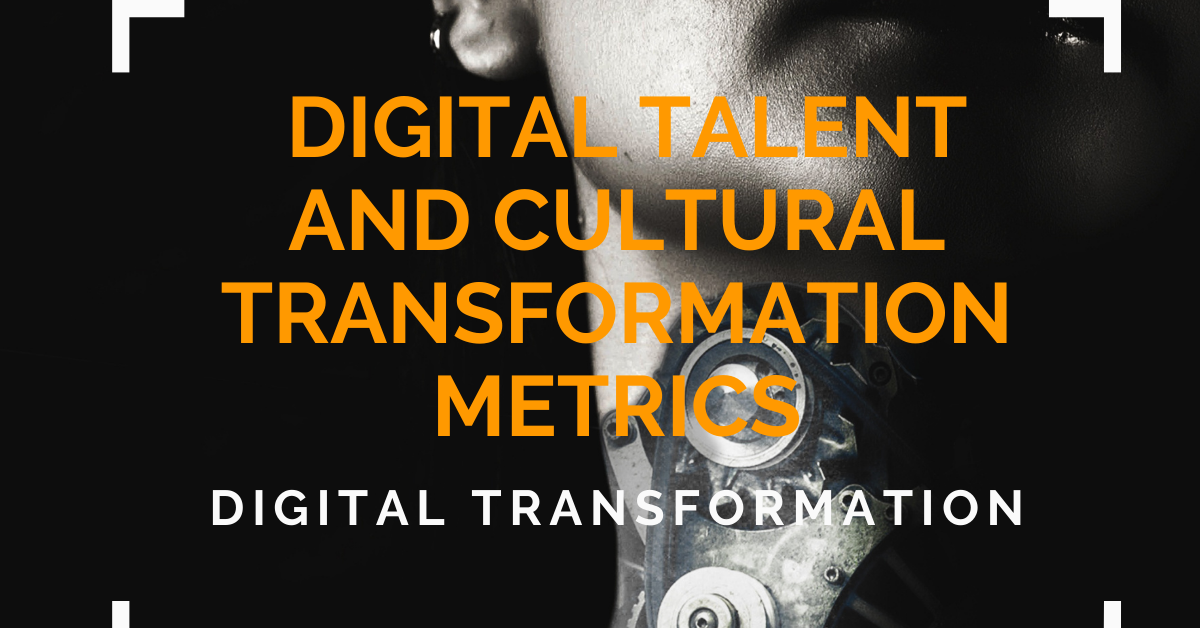“Are you afraid to make decisions with data? Here are 17 age old things every business must do to develop an exceptional data strategy.”
When a company employ a ‘data-driven’ approach it means they make tactical, operational and strategic decisions based on data analysis. A ‘data-driven’ approach involves the whole company. Data driven is about building tools, capabilities, and a organisation culture that acts on data.
“The value of data is the only thing in our industry that is under-hyped.”
Nick Andrews, Executive Chairman | Global Automation Advisor
But why adopt a data driven approach to decision making?
Data analytics will not magically solve every business problem but it can drive business benefit and competitive advantage. For example; data analysis can reveal
- process bottlenecks, duplication or waste and suggest remedies to solve those challenges thereby reducing friction in a process and process costs.
- new opportunities for revenue growth. Tying data to market trends may generate new products and services in response to emerging trends.
- which products and services are no longer profitable.
- what’s happening within business functions e.g. sales or by activities performed within business units (e.g. marketing spend, website performance, etc.).
- how an organisation might best react to events faster than its competitors (i.e. through the use of predictive and prescriptive analytics).
- a competitive advantage an organisations’ competitors cannot see, which in turn, may lead to excess profit. According to Forrester data-driven organisations can expect to grow 30% annually in addition to being profitable and acquiring and retaining new customers
Can data analytics have a dramatic impact on organisations? What systems, processes and culture needs to be in place before data can make an impact on the bottom line? What needs to be in place for organisations to successfully deliver on the promises offered by data analytics? What business problem is an organisation trying to solve using data and is the problem worth solving?
This articles outlines 17 golden rules organisations need to understand before executing their data strategy.
Get A Grip On Statistics And You Can Illuminate The World
1. Data analytics can have a tremendous impact on business but organisations need to start with ‘why’. A data strategy does not exist in isolation. Organisations need to spend time asking themselves why they need data driven analytical insight. The starting point for any data strategy must be an organisations business strategy (i.e. clearly articulated and agreed business goal(s) or the identification of its biggest challenges or opportunities it is hoping to solve with data insight.
Plan for AI, But Do Not Rush In.
Before jumping into investing in data infrastructure, hiring analysts and building data models, take a step back and determine how data is relevant to the decision making strategy of the business.
‘The infrastructure and data models are only one piece of the jigsaw. It is essential that relevant campaigns are built, that the model feeds into. There’s also a need for the deployment and production of the end to end process which includes people, data infrastructures, the models and the campaigns. And finally detailed measurement and evaluation. All of which are necessary for a complete and successful AI implementation in the business’.
Eileen Daly, AI Company Director
2. Put people at the centre of any data strategy: Everything that organisations do with data should be focused upon helping humans make better decisions. Organisations must invest in their people’s understanding of the importance good quality data and the power of data driven decision making. In addition, they should help people understand the data to ensure they are using the right data to make the right decision.
‘Most important is to understand the problem you’re trying to solve, next, ensuring its a problem worth solving (there may be other ways). In the section about pre-requisites, I’d ensure the human is at the centre of it. Everything you’re trying to do is improve the humans ability to make a decision and therefore I’d put humanity up there as an high priority.’
Andrew Anderson, Serial AI entrepreneur and non executive director.
3. AI only works when certain prerequisites are in place. Certain prerequisites need to be in place for organisations to adopt a data driven approach to business operations. Organisations must first collect sufficient high-quality data to be able to make accurate decisions and data is always dirtier than organisations imagine.
It Is Not The Size Of The Sample Size, It Is What You Do With It.
The number one challenge for organisations is to get sufficient high quality data sets into a suitable format to be processed by analytics algorithms. Having a lot of high quality, easily accessible data does not make an organisation data driven. Organisations need to integrate data driven insights into every decision making processes.
“Lack of data has historically been the number 1 cause f delay in projects I have been involved in. Data that needs to be used to train a new model is often stored, but not labelled, making it an arduous task to either go back through historical decisions, or start labelling data from now onwards (often adding weeks if not months to your efforts).”
Wayne Butterfield, Intelligent Automation Expert
4. Don’t wait for the perfect opportunity to learn how to deliver a data analytics strategy. Organisations should not wait until they have a perfect data analytics strategy before they begin using data to make decisions. They should build a minimal viable products and use that experience to build ‘analytics muscle’ over time. They may never be a perfect opportunity to test and learn from data so organisations may as well start now.
“The only bad time to start an analytics program is never. Organisations cannot afford to wait for the perfect time to start. There is no time like the present. Jump in. Start. Learn. Grow.”
Kieran Gilmurray, Global Intelligent Automation Leader
5. Allocate a suitable investment budget for analytics investments. Being data driven takes time and costs money. Organisations must be willing to provide both (e.g. buy or build data warehouses and data lakes; purchase collection, analysis, processing and visualisation tools; hire data analysts and data scientists; etc.).
“No one wants to watch an average movie, in an average movie theatre with average actors. So why do firms not hire the best talent they can afford and give them the best tools they need to do an exceptional analytics job? If organisations want excellent results they have to be willing to spend money on analytics. There are no shortcuts to excellent.”
Kieran Gilmurray, Global Intelligent Automation Leader
6. The concept of big data is alluring but don’t try to coral every possible data set in an organisation. Data is an asset but also a potential liability. Only pull in the data sets that will drive the business. Organisations must be clear on why they are collecting data and the benefit they will drive from it before they begin.
“The common misconception is that all data is useful, in fact I’d say quite the opposite. The right data is useful when it is stored, labelled, and accessible. Pair this with the right expectations and capability then you are on to a winner.”
Wayne Butterfield, Intelligent Automation Expert
7. Hire a graphic designer of visualisation expert. Data maybe the new oil but oil is only valuable once it has been refined and made available for consumer use in a digestible and easily understood manner.
Design For Humans
It is recommended that organisations hire a graphic designer to create dashboards and presentations that business users understand.
“It is no use having the best available descriptive, predictive and prescriptive insight imaginable if no one can understand what it means. Data needs presented to business consumers in a clear, appealing and unambiguous way.”
Kieran Gilmurray, Global Intelligent Automation Leader
8. Siloed data or rather a siloed mentality is always going to inhibit the scope of what can be achieved from any investment in data driven. Therefore, organisations should remember to undertake activities that are directed at remediating siloed data or siloed thinking. There must be a data sharing culture present within an organisation so that data can be joined up.
Develop The Right AI Mindset
9. Data Governance: The last component of becoming a data-driven business is data governance. Organisations need to ensure the data that’s collected is refined and stored securely. They need to ensure that the right legal frameworks are adhered to (e.g. GDPR), and it is known who has access to, and who can use, the data.
“Decisions made that are not based on data are, by definition, risky – but decisions built on unreliable data are worse.”
Nick Andrews, Executive Chairman | Global Automation Advisor
10. Hire skilled analysts. Organisations need to take the time to ensure they are hiring the right individuals to appropriately manage the business intelligence functions within their organisations (i.e. right aptitude and attitude). They need to ensure they are paid their worth, developed and engaged so that they remain within the organisation. Business intelligence, data analysts or data scientists need to be taught their organisations strategy and align their efforts to that.
“We see time and time again that companies struggle to deliver AI programmes due to the lack of talent. We also see companies spend lots on new technologies but they often forget that spending money on talent is just as important. We always recommend a hybrid approach to new technology implementation. Hire experts to help you get started and invest in your own people. A combination of the two is a recipe for success!”
Harrison Goode, AI and RPA Specialist Recruiter
11. A data-driven organisation may have a continuous improvement mindset. Data should be used as critical evidence to help inform and influence strategy but it should not be relied upon in isolation. Subject matter experts should constantly query and challenge the data insight presented to them and constantly demand new and better information to help make better decisions. Organisations should adopt a plan, do, check, act (PDCA) approach to data driven decision making. Regular retrospectives or lesson learned sessions should be undertaken and the insight from those sessions fed back the data analytics experts to improve the insight being brought forward at every opportunity.
“Strategy must be driven both by current data and predictive analytics, with the latter, your strategy will soon be obsolete.”
Nick Andrews, Executive Chairman | Global Automation Advisor
12. Data analytics, and artificial intelligence models in particular, can become highly complex. This can confuse and undermine the trust of colleagues. Data analysts have to be able to explain what happens inside the black box in a way that business users can comprehend. Awareness campaigns and engaging colleagues in the development of expert insight helps people understand more about data analytics, the art of the possible, the limitations and ramifications of AI driven decisions. Change management must be an integral part of any data project.
As much as a business may want to democratise data driven decision making or analytical expertise, the simple fact is that just as not everyone can sing or play a musical instrument, not everyone can be a data scientist. Many employees may not have the skill set needed to become fully data-savvy. Organisations must spend money and invest in the development of training materials and courses to ensure all workers gain the knowledge and abilities they’ll need to use analytical insight.
“Similar to Automation, having an “intelligent” strategy in place to make data analytics work, is equally important. A mandatory, yet often missed, question that organisation should ask themselves is, “Is the company working for data or is the data really working for them?” The data needs to work to help organisations drive critical business decisions. If the data does not do that, then stop.”
Swapnil Pitale, Intelligent Automation Global Practice Head
13. Data Analytics and Artificial Intelligence is often profitable in the long run. A lot of organisations want to explore the possibilities of Data Analytics and Artificial Intelligence. However, it can take time before data driven decision making and AI starts to pay off.
Build A Pragmatic Business Case For AI.
A business case may not immediately profitable, which can make it hard to find funding, but data analytics is about building competitive advantage over the long-term.
“Data only works for you, if you listen to it carefully and in context – Einstein summarized this perfectly when he said “Not everything that can be counted, counts and not everything that counts can be counted.”
Nick Andrews, Executive Chairman | Global Automation Advisor
14. Start with a proof of concept; scale up later. Organisations don’t have to change their entire operating overnight. They can go step by step. Proofs of concept are a good way of helping an organisation and its staff understand what AI is capable of and what it can do for their business. Many organisations rush to get the necessary resources in place without taking the time to ask themselves if a data driven culture will fit into the culture of the organisation.
Build a Pipeline Of Processes To Have Opportunities Ready To Go Beyond A POC.
Creating a data culture is one of the keys to becoming a data-driven organisation but there are no easy shortcuts to a data culture. Time, small wins, transparency, excellent communication, trust, expertise and insights need shared, colleagues need to feel empowered and energised to embrace the new.
“A Proof of Concept (POC) is great way to test the waters before you commit fully to the idea and the solution. It fosters an ecosystem for solving problems with experimental mindset. It also helps assess solution feasibility vis-à-vis IT Infrastructure, data availability, quality and information flow across upstream-downstream value chain.
A POV is also good way to get an understanding of culture, change readiness and long-term strategic vision. It is like taking baby steps without making a huge financial or resource commitment for a firm wide AI implementation. An ideal way to make AI work for Organizations is four-step approach – 1. Shape organizational vision for AI, 2. Experiment using a POC, 3. Scale to build and 4. deploy long-lasting solutions & Transform by facilitating capability development, user-adoption & explainability”
Abhineet Sood, Intelligent Automation & Process Transformation Consultant
15. There must be a firm commitment from from leaders to become data driven. Unless data driven decision making is a top 5 executive goal then a data driven culture will struggle to survive. Having board level presence, that underpins data driven decision making in an organisation, is a requirement for it to be a success.
“Unlike traditional process automation (e.g. RPA), where sponsors can see benefits almost immediately, improving data quality can take much longer and sometimes doesn’t deliver immediate or direct cost savings.
Data integrity is key. Smart algorithms & tools will not work well or at all if, for example, data records on product codes are not aligned across data sources, or customers have multiple duplicated records in a CRM system.
Organisations need data governance to drive data quality. Data quality requires significant investment and that is not possible without a firm commitment, and money, from a leadership team.”
Alexander Park, Head of Smart Automation
16. Setup a Centre of Expertise (COE). Invest in the work of data scientists by having a central nucleus of expertise which ensures that common standards, methods and tools are used for the collection, curation, management and publication of data. Give the COE an enterprise platform with the right levels of data privacy, resiliency and security best practices built in.
“Remember that automation and digitisation is a long term game. Therefore dedicate time and money to maintain the solutions an organisation develops and become reliant upon. You can buy a lemonade from a kid hustling on the streets but in order for that kid to sustain revenue it would need a constant flow of customers in order to buy resources and to become more efficient at their business. You need to dedicate that same money and time consistently to achieve great results.
Now I know that seems pretty obvious but you’ll be surprised how much money companies throw away on a relevant business ‘trends’ for a short period of time and wondered why they even tried in the first place.
You have to truly believe and research on your own internal initiatives to ensure that you can sustainability keep them. Otherwise your company will collapse if it’s built on a bunch of rolled up blueprints. Utilise what you have created and build up from there.”
Jessica Levett, Scrum mater and Architect
17. Don’t rely on data alone to make decisions; AI can’t replace human judgement. Organisations should not want to automate the process of human interpretation. An algorithm can augment human judgement and expertise, but people are irreplaceable. SMEs need to use data to refine their many years of industry expertise to make better decisions, not be replaced by it. People are an organisations greatest asset, never forget that.
“Augmentation is the keyword here. Data can point you in the right direction when making decisions, but you cannot discount the human aspect of digital transformation. Ultimately, your customers and employees are the ones who will interact with your transformed organization and processes. Make sure to include their voice in your strategies and decisions.”
Ema Roloff, Digital Transformation Navigator
Is your organisation ready to get started on path to data driven decision making? What advices would your organisation give organisations starting on their data analytics journey? Does your organisation understand the business problems they are trying to solve with data ensuring and are they problems worth solving?
#intelligentautomation #digitaltransformation #digitaldisruption #digitalfuture #digitalstrategy
If you enjoyed this article then you may enjoy these articles too.
- How to build a data driven company – MIT Sloan Management
- Building an Automation Centre of Expertise | An Experts Guide – 5 part series
- If your RPA program is not making money then it has failed.
- RPA – Proof of Concept (POC) or Proof of Value (POV)? Who cares, just get going!
- 40 Essential Selection Criteria to Choose an RPA Platform – 5 part series
- I meet 150+ developers and these are 20 signs of a truly gifted developer
- The A-Z of Robotic Process Automation, Intelligent Automation and Digital Transformation
- How to scale successfully – you have 60 seconds to reply
- Can organizations implement RPA without having a digital transformation strategy – what would you have said?
- FREE training sites for Robotic Process Automation, Intelligent Automation, Data Analytics, Artificial Intelligence & Digital Training Sites
- 22 way to cut the cost of an automation program – 4 part series
If this could benefit someone else tag them and share this.
Free to reuse: We are a community of RPA, analytics, digital and intelligent automation experts with years of real world experience. We have stories to tell and the scars to show for it. We share our collective wisdom for free to simply provide as much value as we can to you. Therefore, if you want to post this article on your LinkedIn page then please feel free to do so. The more information we share within the RPA community the more likely businesses are to succeed with this excellent technology.
Further Help: If I can help you in any way please do reach out.
Note: The views expressed above are our views and not those of my employer or the employers of the contributing expert







Leave a Reply